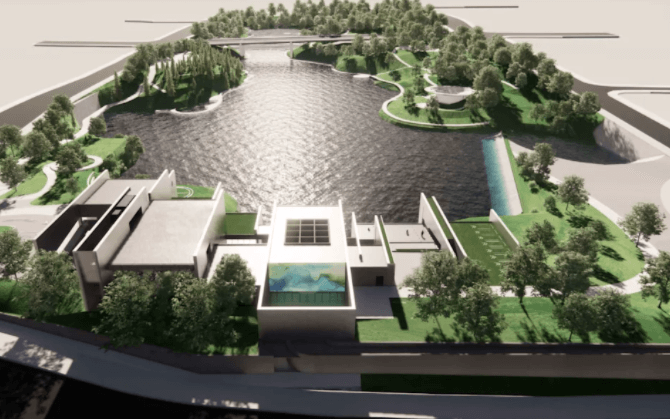Smart cities, the different approach between algorithms and sustainability in China and Japan, while Saudi Arabia promises to offer the world’s best environment to live in.
A place where traditional networks and services are made more efficient with the use of digital and telecommunications technologies for the benefit of its inhabitants and businesses. This is the definition of a smart city according to the European Union, whose vision goes beyond the use of information and communication technologies for better use of resources and fewer emissions. That means smarter urban transportation networks, updated water supply and waste disposal facilities, and more efficient ways to light and heat buildings. But that’s not all, because the direct consequence of these processes is a more interactive and responsive city government, safer public spaces, and the ability to meet the needs of an aging population.
Places that are energy self-sufficient, economically sustainable and able to manage resources intelligently. They are cities hinged on sensors and technologies, connected together as nodes to produce a large amount of data to be analyzed in real time, to improve the effectiveness of services and facilitate the daily lives of the people who live there. Theories that on a practical level generate in car sharing, electric cars, self-driving vehicles, smart traffic lights that regulate intersections, waste systems that provide environmental benefits and economic convenience to the public administration, smart parking to reduce traffic and waiting times for motorists.
The difficulty of making a smart city: the Google flop
There are many experiments in the effort to develop a smart city model that is safe, effective, and replicable elsewhere. Some have already begun, others are on the launch pad, and still others have turned out to be flops before they’ve even begun. The latter is the case of Sidewalk Labs, the dedicated smart urban development division of Alphabet (the holding company that controls Google and all its business units) to create a smart city in Quayside, an area on Lake Ontario in Toronto. Launched in 2017 along with Waterfront Toronto, the project included total investments around $3 billion, with the goal of building two new neighborhoods on an area of nearly 5 and 8 acres to form the innovative development and economic acceleration district.

At the heart of the project was heavy use of Big G technologies to create a city with dynamic sidewalks that can widen and narrow depending on the number of pedestrians present and traffic conditions resulting in increased and decreased street sizes. Other ideas were bike lanes to encourage the use of bicycles instead of cars and heated outdoor floors to combat the cold winter temperatures of the Canadian city, sensors scattered around to collect data on residents’ preferences and habits. So much promise has remained so, while the smart city has briefly lived only on paper. “Economic uncertainty in the world and in Toronto’s housing market makes it impossible to make the project financially sustainable without giving up crucial parts of the plan,” explained Dan Doctoroff, CEO of Sidewalk Labs in May of last year.
Saudi Arabia’s Neom project too good and expensive to be true?
If Google’s plans were big, those put in the pipeline for the realization of Neom (a name that merges the Greek prefix neo meaning ‘new’ and the Arabic word mustaqbal, meaning ‘future’) were and remain much bigger. Because we’re talking about a futuristic city with an extension of 26,500 square kilometers, whose construction requires investments of about 500 billion dollars. Impossible figure? Yes, for ordinary mortals, but not for Mohammed bin Salman, Crown Prince of Saudi Arabia, eager to create the largest smart city in the world, but also to find an alternative to oil dependence for the country’s economy. The huge investment required for the project counted on a potential partnership with many of the world’s highest and richest companies (such as Amazon, Tesla, IBM, just to name the most famous), repaid with a host of tax and resource benefits, starting with free electricity use for their respective offices on site.
With the use of technology in every sphere, from health to mobility, and a widespread collection of personal data that immediately raised the alarm about their protection and management – after all, we’re talking about one of the harshest dictatorial regimes in the world – Mohammed bin Salman’s plan aimed to populate the city with flying cabs, robot waiters, beaches with sand that can light up at night, a cloud seeding system to ensure year-round rainfall and even an artificial moon created through the use of drones. A long series of innovations, with the inevitable touch of vanity typical of the Saudi royal family, to get to the point of promising that the inhabitants would never get sick from work and stress. All very nice, indeed too nice and impossible to put into practice, so much so that in recent years many foreign managers and consultants, including the archistar Norman Foster, have left the Neom project.

To try to revive the plan, last January Mohammed bin Salman announced The Line, an urban planning project that aims to develop a straight route of 170 kilometers. An area where there will be no cars, no roads and no carbon emissions, because people will travel on high-speed public transport with connections to hospitals, schools, green spaces and other services in less than 25 minutes, to improve the lives of about 1 million people who will live in the various communities located along the four areas touched by the route. Nice premises, with the hope that they don’t remain just promises.
Woven City, the intelligent city of Toyota
Less pretentious and more focused on the discovery of models to be pursued and perfected in order to arrive at the development of an intelligent city is Toyota’s Woven City project. It rises on the slopes of Mount Fuji on an area of about 70 hectares, which will accommodate about 2,000 people, employees of the Japanese company. The plan is to test technologies for the future, starting with the infrastructure of the metropolis. Here robotics, smart homes, digital services and autonomous driving are intertwined with the priority given to renewable energies, hydrogen in primis, which for the Japanese company will be one of the main elements to reduce the impact of products and human activities on the environment. Again, the focus is on sensors that connect vehicles, buildings and people, with artificial intelligence seeking to improve and simplify the processes that determine the accessibility and use of a range of services.

Robotics to help the disabled and elderly, and sensors and home health systems that can monitor the health of inhabitants are two examples in this direction. Sustainability is one of the characteristics pursued by Toyota, which has entrusted the construction of the city-laboratory to the studio of Danish architect Bjarke Angels, specialized in the design of infrastructure inspired by ecology. Woven City will feature wooden buildings that reduce pollution, with roofs equipped with photovoltaic panels to generate solar energy in addition to that produced by hydrogen fuel cells, while an underground system will manage the collection and recycling of water.
Ai City Cloud Valley, China’s attempt is all about artificial intelligence
From China comes Ai City, the latest smart city project focused on artificial intelligence. Talking about smart cities in the country of the dragon is nothing new, as demonstrated by a 2018 report by Deloitte, according to which of the approximately one thousand smart city projects activated in the world, just under half were signed by the Chinese. The mastermind of the plan is Victor Ai, CEO of the local startup Terminus Group, which was founded in 2015 with the support of China Everbright Group, a state-controlled financial conglomerate. The main protagonists here are the algorithms, on which the entire functioning of the city depends.
In Chongqing, in the central-southern part of the country, the Ai City pilot model is being developed, which includes robotic services, intelligent safety and fire prevention systems and new e-commerce methods that can be used on the Ai Park digital platform. The project focuses on the Internet of Things to collect information useful for artificial intelligence to learn, know and anticipate the needs and preferences of the inhabitants and aims to create a prototype that can be replicated elsewhere, as demonstrated by the agreements currently being finalized with the cities of Wuhan, Deyang-Chengdu and Shenyang. Based on the combination of technology and nature, the Terminus AI City aims for the coexistence of various species of life, such as human, animal, plant and artificial. A prospect that immediately aroused criticism, also because Chongqing is the most guarded urban center in China, whose government tends to go everywhere to take advantage of all kinds of useful advantages to excel in the technological field. The latter is, moreover, one of the priority objectives present in the fourteenth and last five-year plan launched last year by the People’s Republic of China.



